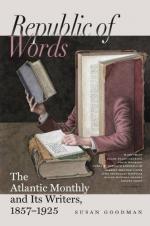VI.
The Carmine.
The only part of this ancient church which escaped destruction by fire in 1771 was, most fortunately, the famous Brancacci chapel. Here are the frescos by Masolino da Panicale, who died in the early part of the fifteenth century,—the Preaching of Saint Peter, and the Healing of the Sick. His scholar, Masaccio, (1402-1443,) continued the series, the completion of which was entrusted to Filippino Lippi, son of Fra Filippo.
No one can doubt that the hearty determination evinced by Masolino and Masaccio to deal with actual life, to grapple to their souls the visible forms of humanity, and to reproduce the types afterwards in new, vivid, breathing combinations of dignity and intelligent action, must have had an immense effect upon the course of Art. To judge by the few and somewhat injured specimens of these masters which are accessible, it is obvious that they had much more to do in forming the great schools of the fifteenth and sixteenth centuries, than a painter of such delicate, but limited genius as that of Fra Angelico could possibly have. Certainly, the courage and accuracy exhibited in the nude forms of Adam and Eve expelled from paradise, and the expressive grace in the group of Saint Paul conversing with Saint Peter in prison, where so much knowledge and power of action are combined with so much beauty, all show an immense advance over the best works of the preceding three quarters of a century.
Besides the great intrinsic merits of these paintings, the Brancacci chapel is especially interesting from the direct and unquestionable effect which it is known to have had upon younger painters. Here Raphael and Michel Angelo, in their youth, and Benvenuto Cellini passed many hours, copying and recopying what were then the first masterpieces of painting, the traces of which study are distinctly visible in their later productions; and here, too, according to Cellini, the famous punch in the nose befell Buonarotti, by which his well-known physiognomy acquired its marked peculiarity. Torregiani, painter and sculptor of secondary importance, but a bully of the first class,—a man who was in the habit of knocking about the artists whom he could not equal, and of breaking both their models and their heads,—had been accustomed to copy in the Brancacci chapel, among the rest. He had been much annoyed, according to his own account, by Michel Angelo’s habit of laughing at the efforts of artists inferior in skill to himself, and had determined to punish him. One day, Buonarotti came into the chapel as usual, and whistled and sneered at a copy which Torregiani was making. The aggrieved artist, a man of large proportions, very truculent of aspect, with a loud voice and a savage frown, sprang upon his critic, and dealt him such a blow upon the nose, that the bone and cartilage yielded under his hand, according to his own account, as if they had been made of dough,—"come




